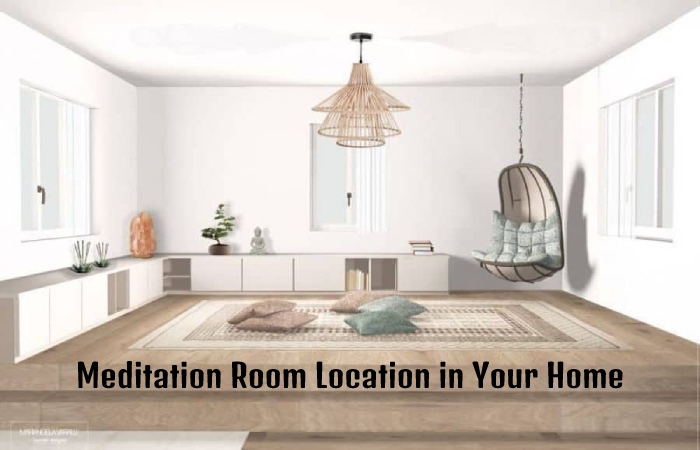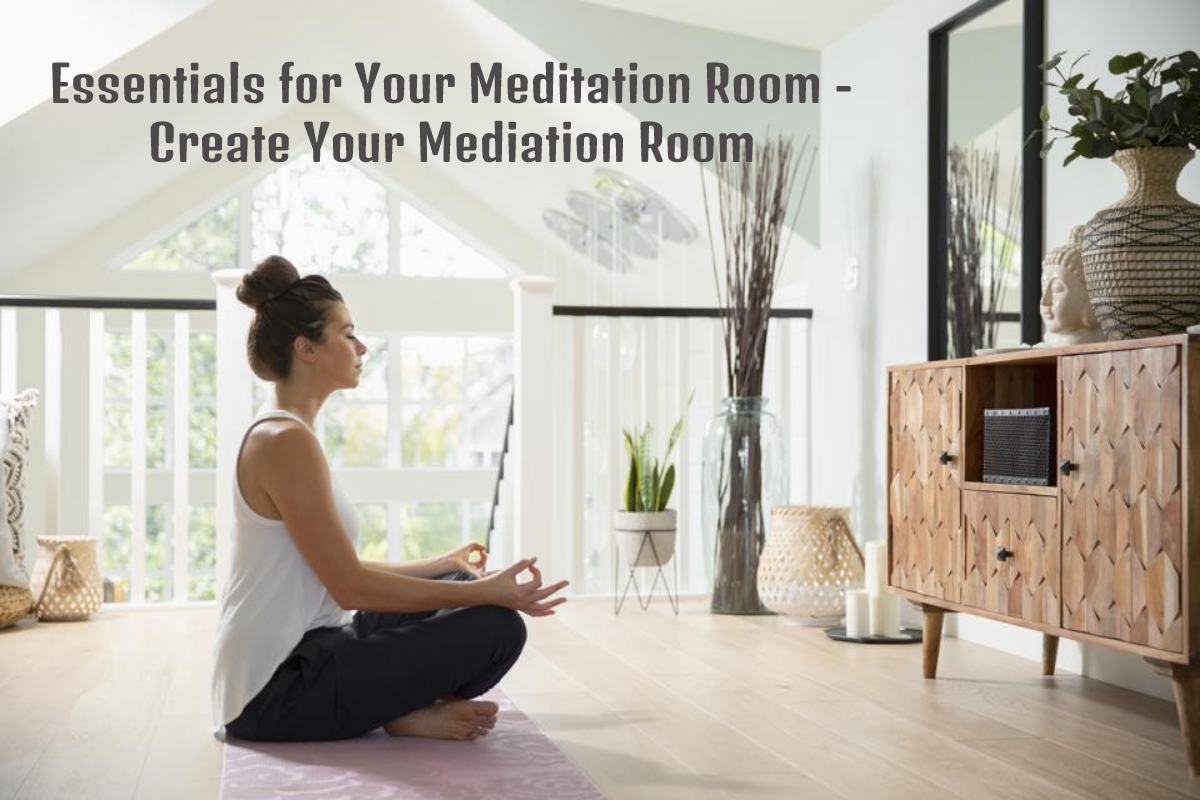Table of Contents
About Essentials for Your Meditation Room
Essentials for Your Meditation Room: Meditation is an essential practice, and even more so when you live in such a big city where traffic, stress, and work are the order of the day. This is encouraged to achieve a state of relaxation and focus, re-energizing and improving physical and mental well-being.
However, we don’t always have a suitable space at home to feel comfortable and free to meditate. Below we share seven steps to transform an area of your home into a meditation space, and you will see how easy it is.
Meditation Room Location in Your Home

The first step is the choice of location. Whether it’s a small bedroom, living area, or converted office, interiors should ideally be away from high-traffic areas of the home. Outdoor spaces are ideal for those who live in a temperate climate, as is any room with plenty of natural light and an outside view.
Decoration Essentials for Your Meditation Room
A home Meditation space should reflect what gives you an intuitive sense of well-being, so create a relaxing environment with decorative touches like dim lamps or strings of paper lanterns. Natural elements like shells, crystals, and stones can help you feel closer to nature. Consider using the Swedish design principle “Lagom” to create a calming, minimalist space with neutral colors, natural materials, and a relaxed aesthetic.
Drishti
Provide a focal point or “Drishti” for your yoga sessions to help you balance and clear your mind. It can be a photo hanging on the wall or a textured rug on the floor. Avoid decorating the yoga room with too many interesting points. Otherwise, you may find it harder to focus on your Drishti.
Floors
Bringing the outdoors is a popular concept in contemporary home design, and it works just as well in yoga room décor. Choose a room with outdoor access and open windows to awaken the senses. Amplify this feeling of being at one with nature by filling your home yoga space with touches of greenery, from grapevines to succulents.
Environment
For hot Mediation or Bikram sessions, you can combine the intensive moisturizing effect of a humidifier with the temperature-raising impact of a powerful heater. Ideally, it should reach 40% humidity and 40 degrees Celsius for optimal Bikram conditions. Engineered or Marley wood floors work best in high humidity.
Team
Choose a small corner to store a Mediation towel and a comfortable natural fiber blanket. You can also buy a set of yoga blocks to help you reach poses comfortably or a strap that increases flexibility by making many challenging poses more accessible. A full-length mirror is a must-have in your Mediation space so you can view and adjust poses as needed.
If you’re finding it difficult to focus on your practice entirely, consider adding a set of Bluetooth speakers to your home yoga space so you can follow a guided meditation or online class. You can also amplify ambient noise by placing a gong around the room or investing in singing bowls to emit soothing frequencies.
Ultimately, your home yoga space should be quiet, uncluttered, and inviting, with ample space to freely carry out your routine. Whether you use it for quick games or morning meditation, you want your yoga space to feel authentic.
7 Steps to Essentials for Your Meditation Room
Choose a Private Place
It is better to choose a corner or a room away from doors and areas with a lot of movement, such as a bathroom. B. the living room or dining room. If you prefer, it can be in a study or the corner of your room. So you can be alone and quiet without anyone interrupting you.
Goodbye Technology
Shut down, move away, and try not to have devices or mobile devices around. You eliminate distractions, noise, or vibration and can concentrate on the essentials.
Choose the Color Shown
The decoration is essential in these cases. According to color theory, pastel tones (blue, pink, and beige) are more relaxing than bright tones (red, yellow, royal blue). You can paint one or more walls to give them a calm look.
Provide a Visually Clean Room
Try to keep everything around you clear with no books, furniture, or boxes that can cloud your mind. It will help your mind not to have the desire to conform or to feel overwhelmed by the clutter.
Garden Furniture
No bulky furniture is necessary for a meditation room. On the contrary, the more freedom you have, the more comfortable you will feel. Some plants and pictures can add life to your meditation space.
Choose a Spot near the Windows
Sunlight, fresh air, and open space will be factors that will make your meditation sessions much more enjoyable. You will see how relaxing it is to meditate near one.
Attitude
How to get it with aromas, essences, and relaxing music. Choose candles or incense sticks with your favorite fragrance and create a playlist for those moments with nature sounds.
Conclusion
The results of this meta-analysis represent an aggregation of findings from more than 26 studies directly addressing mediation programs. Although the sample was too small to distinguish between types of mediation programs, the overall summary of reported results from studies and reviews of mediation programs clearly shows the benefits of using mediation.
In general, mediation processes are very effective in saving time and money. Meta-analysis shows that mediation improves perceived time and cost savings by at least 16% or 17%, supported by documented time and cost savings. Depending on the features of the mediation program, these improvements can be at least 40% but are more likely in the region of around 30%.
In addition, a meta-analysis shows that mediation improves perceptions of fairness and satisfaction by at least 3% to 6%. Therefore, mediation processes result in small but definite improvements in perceptions of right and satisfaction. Depending on the features of the mediation program, these improvements could be in the 15% to 25% range but are more likely in the 10% to 15% range.

